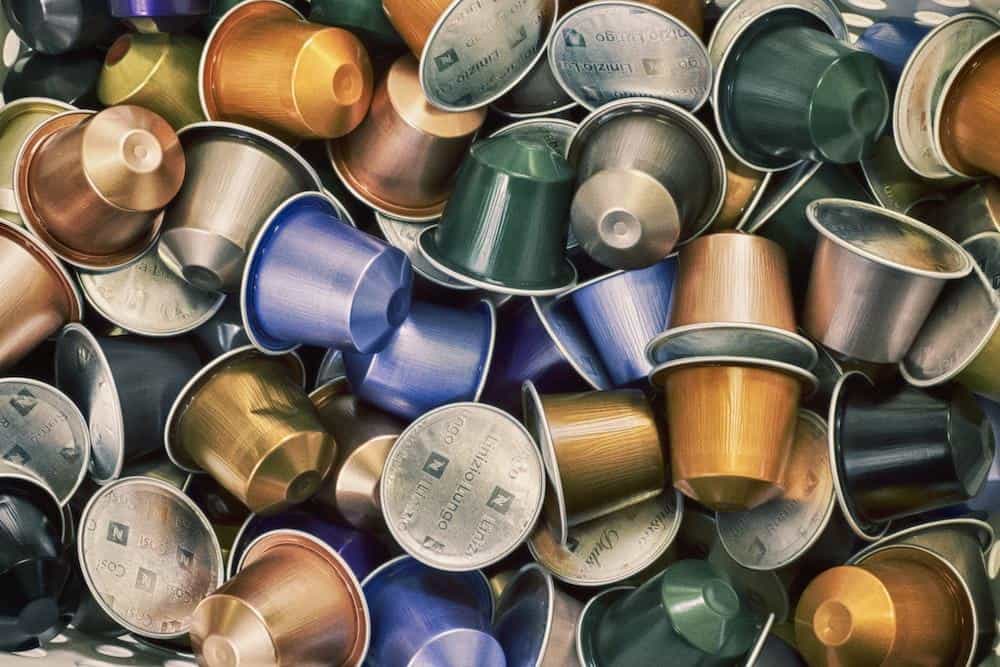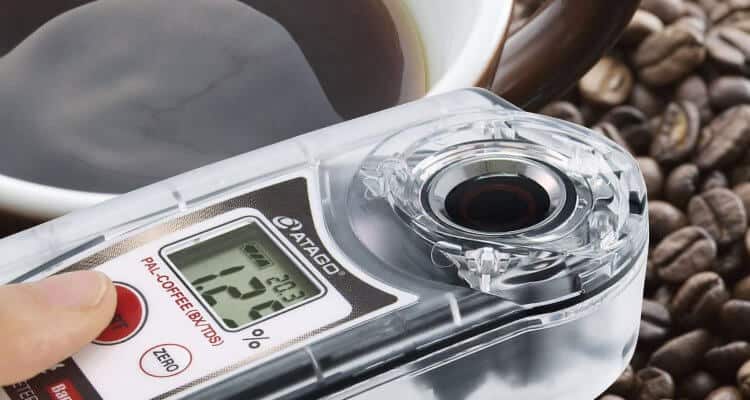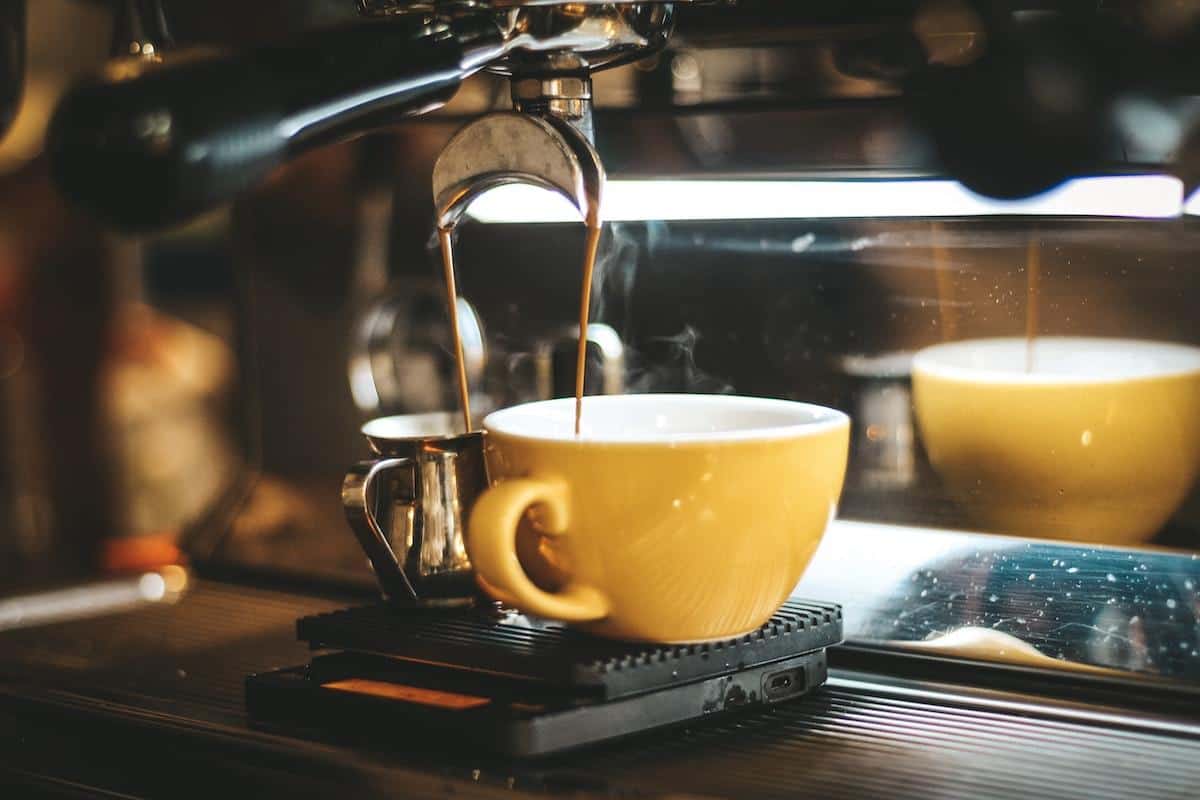Coffee pods have become increasingly popular in recent years, offering a convenient and quick way to enjoy a cup of coffee at home or on the go. With their rising popularity, it is important to understand what exactly coffee pods are and why they have gained such traction among coffee lovers around the world.
In this article, we will delve into the history, design, mechanics, and various aspects of coffee pods. We will explore their origins and how they have evolved over time, as well as decipher the composition and design that makes them unique. Additionally, we will uncover the magic behind how coffee pods work and compare them to traditional brewing methods.
Furthermore, we will highlight some of the top players in the market when it comes to coffee pod brands and explore different types of coffee pods available, from espresso to flavored varieties. A step-by-step guide on how to use coffee pods effectively for brewing the perfect cup will also be provided.
As the environmental impact of coffee pods becomes an increasing concern, we will evaluate their sustainability and discuss alternative options for eco-friendly and cost-effective brewing. Finally, we will look into future trends and innovations in the world of single-serve coffee.
So sit back, grab a cup of your favorite brew, and get ready to dive into the world of coffee pods – where convenience meets flavor in every sip.
A Brief History of Coffee Pods
Coffee pods have become a staple in many households, providing a convenient and quick way to enjoy a cup of coffee. However, the history of coffee pods dates back further than you might think. Understanding the origins and evolution of coffee pods can shed light on how this popular brewing method has developed over time.
The concept of coffee pods can be traced back to the invention of the coffee capsule by Eric Favre in 1977. Favre, a Swiss engineer, was working for Nestlé at the time and was tasked with creating a single-serve coffee solution. This led to the development of Nespresso’s first coffee capsule system, which revolutionized the way people brewed their morning java.
In 1998, Keurig introduced its own version of single-serve coffee with the release of its K-Cup system. This innovation allowed consumers to conveniently make a single cup of coffee at home or in the office without dealing with messy grounds or complicated equipment. The success and popularity of Keurig’s K-Cup system soon led to an explosion in the coffee pod market, with various brands jumping on board to offer their own versions.
Over time, coffee pod technology has evolved to meet consumer demands for convenience and variety. Today, there are different types of coffee pods available on the market, including espresso pods for those who prefer a strong shot of caffeine and flavored pods for those who enjoy a hint of vanilla or caramel in their cup. Coffee pod machines have also advanced with features like programmable settings, temperature control, and built-in frothers.
As consumers continue to embrace single-serve brewing methods like coffee pods, it is clear that this trend is here to stay. Coffee pod brands are constantly innovating and introducing new flavors and options to cater to different taste preferences. In the next section, we will explore some of the top players in the market who have succeeded in capturing consumer attention with their high-quality offerings.
What Exactly Are Coffee Pods? Decoding the Composition and Design
Coffee pods are single-serving containers that are used to brew coffee. They are often made of a combination of plastic and aluminum, creating a sealed capsule that protects the coffee grounds inside from exposure to air, light, and moisture. The design of coffee pods allows for a quick and convenient brewing process.
The interior composition of coffee pods varies depending on the brand and type of pod. Typically, coffee pods consist of ground coffee that is tightly packed inside the capsule. Some brands also add a filter paper to ensure proper extraction during brewing.
The size and shape of coffee pods can also differ. Most commonly, they are designed in a round or oval shape to fit into compatible machines. The dimensions of the pod can vary based on the machine it is intended for.
To use a coffee pod, one simply needs to place it into a compatible pod machine, which will puncture the top or bottom of the pod to allow hot water to flow through it. The water extracts flavors from the coffee grounds inside and then drips down into a cup or container, ready for consumption.
Some coffee pod systems also include additional features like milk frothers or settings for different cup sizes. These machines are often equipped with barcode scanners that read specific information about the pod being used, such as brew time and temperature settings needed for optimal taste.
Overall, coffee pods offer simplicity and ease-of-use without compromising on flavor. Their compact design and standardized formats make them suitable for busy individuals who crave a quick cup of high-quality coffee without much hassle.
- Coffee pods are single-serving containers composed of plastic and aluminum.
- They contain tightly packed ground coffee along with a filter paper.
- The size and shape of coffee pods can vary based on machine compatibility.
- Pods are inserted into compatible machines that puncture them for hot water extraction.
- Coffee pod systems may include additional features and settings for customization.
The Mechanics behind Coffee Pods
Coffee pods may seem like a magical solution to getting the perfect cup of coffee in seconds, but how exactly do they work? Understanding the mechanics behind coffee pods can help us appreciate their convenience and consistent results.
At the heart of a coffee pod is the unique brewing technology that allows for a quick and efficient extraction process. Most coffee pods are designed with a combination of paper and plastic materials. The top portion of the pod typically consists of a foil or plastic lid, which helps to seal and preserve the freshness of the coffee grounds inside.
When a coffee pod is used, it is placed into a compatible machine, which then pierces the top foil or plastic layer to create an opening for hot water to enter. The machine usually has two needles – one piercing needle for puncturing the top layer and another lower needle for extracting the brewed coffee.
Once water enters the pod, it comes into contact with the pre-packaged coffee grounds. The hot water extracts flavors and oils from the ground coffee as it passes through. This process is often facilitated by pressure generated within the machine to ensure optimal extraction.
As water flows through the coffee grounds grounds, it becomes infused with those rich flavors and aromas, ultimately resulting in a freshly brewed cup of coffee. The lower needle then dispenses this brewed liquid directly into your cup, ready to enjoy.
The mechanics behind coffee pods allow for precise control over factors such as water temperature, pressure, and brew time. This consistency ensures that each cup produced using a coffee pod will meet your taste preferences time after time. Additionally, cleaning up afterward is simple; just remove and discard the used pod without any messy filters or grounds to deal with.
Coffee Pods vs Traditional Brewing
When it comes to brewing coffee, there are two main methods that people tend to choose from: traditional brewing and pod-based systems. Traditional brewing involves using a coffee maker or manual brewing methods like pour-over or French press. On the other hand, pod-based systems utilize pre-packaged coffee pods that are designed to work with specific machines. In this section, we will explore the pros and cons of using pod-based systems compared to traditional brewing.
One of the biggest advantages of pod-based systems is their convenience. These systems offer a quick and easy way to make a cup of coffee without the need for grinding beans or measuring out coffee grounds. With just a simple push of a button, you can enjoy a fresh cup of coffee in minutes. This makes them especially popular among busy individuals who are always on the go.
Another benefit of using coffee pods is the consistency in taste. Since each pod contains a pre-packaged amount of coffee grounds, you don’t have to worry about over or under-extracting your caffeine fix. This ensures that every cup you brew will have the same strength and flavor profile. Additionally, many pod brands offer a wide variety of flavors and blends to choose from, allowing you to explore different taste profiles without buying multiple bags of coffee.
Despite their convenience and consistent taste, there are some downsides to using pod-based systems as well. One key concern is their environmental impact. Coffee pods are typically made from plastic or aluminum materials that are not easily recyclable. This means that they often end up in landfills, contributing to waste accumulation. However, it’s worth noting that some companies have introduced recyclable or compostable pods in an effort to reduce their ecological footprint.
Furthermore, compared to traditional brewing methods where you can control various factors like water temperature and grind size, pod systems offer limited customization options. While this may not be a concern for casual coffee drinkers, enthusiasts who prefer to have more control over their brew may find pod systems too restrictive.
In summary, pod-based systems offer convenience and consistency in taste, making them a popular choice among busy coffee lovers. However, their environmental impact and limited customization options are some factors to consider before choosing this brewing method. Ultimately, it all comes down to personal preference and priorities when it comes to enjoying that perfect cup of coffee.
Popular Coffee Pod Brands
Nespresso
Nespresso is one of the most well-known and popular coffee pod brands in the market. They offer a wide range of coffee flavors and blends to suit various preferences. Nespresso machines use a unique extraction system that ensures a consistent and high-quality cup of coffee every time. The brand is known for its sleek and stylish design, making it a favorite among coffee enthusiasts who value aesthetics.
Keurig
Keurig is another major player in the coffee pod market, particularly in North America. Their coffee machines are widely recognized for their convenience and versatility as they offer a wide selection of coffee pods from various brands. Keurig machines allow users to choose from different cup sizes, catering to individual preferences for stronger or milder brews. This brand also offers special editions like the Keurig K-Café, which can make espresso-style drinks using their specialized pods.
Lavazza
Lavazza is an Italian brand that has made a name for itself with its high-quality coffee beans and now extends its expertise to the realm of coffee pods. Lavazza offers a diverse range of blends that cater to different taste profiles, including traditional Italian espresso and specialty coffees like caramel macchiato or vanilla latte. They also have sustainability initiatives in place like compostable pods, making them an appealing choice for environmentally conscious consumers.
These are just a few examples of popular coffee pod brands in the market, but there are many other options available as well. Some other notable brands include Tassimo, Caffitaly, Senseo, and illy. Each brand has its own unique features and offerings that cater to different taste preferences and brewing methods, providing consumers with plenty of options when it comes to choosing their preferred coffee pod brand.
Exploring Different Types of Coffee Pods
Coffee pods come in a wide variety of types and flavors, providing coffee lovers with an expansive range of options to choose from. One popular type of coffee pod is the espresso pod. Espresso pods are designed to produce a concentrated shot of coffee that is strong and flavorful.
They are usually smaller in size compared to other types of coffee pods, containing the perfect amount of ground coffee needed for a single serving of espresso. Espresso pods can be used to make various espresso-based drinks such as cappuccinos, lattes, and macchiatos.
Another type of coffee pod that has gained popularity is the flavored variety. Flavored coffee pods allow individuals to enjoy their favorite flavors without the need for additional syrup or additives. These pods are infused with various natural and artificial flavors such as caramel, vanilla, hazelnut, and chocolate, among others. The flavors blend seamlessly with the coffee during brewing, resulting in a deliciously flavored cup of joe.
In addition to espresso and flavored varieties, there are also specialty coffee pods available in the market. These specialty pods cater to specific preferences and tastes by using unique blends or single-origin beans.
For example, there are Ethiopian Yirgacheffe coffee pods for those who appreciate fruity and floral notes, or Colombian Supremo pods for those who prefer a well-balanced cup with hints of nuttiness. Specialty coffee pods offer consumers the opportunity to explore different flavor profiles and experience high-quality brews from around the world.
With such a vast selection of different types of coffee pods available on the market today, it’s no wonder that they have become so popular among coffee enthusiasts. Whether you prefer a bold shot of espresso or enjoy experimenting with different flavors and origins, there is sure to be a coffee pod that suits your taste buds perfectly.
How to Use Coffee Pods
Coffee pods have become increasingly popular in recent years due to their convenience and ease of use. They offer a quick and simple way to brew a single cup of coffee, without the need for complicated equipment or measuring. In this section, we will provide a step-by-step guide on how to use coffee pods effectively for brewing the perfect cup.
- Choose the Right Coffee Pod: The first step in brewing coffee with pods is selecting the right one for your taste preferences. There are various types of coffee pods available, including espresso, medium roast, dark roast, flavored options, and more. Consider your preferred flavor profile and strength of coffee when making your selection.
- Prepare Your Coffee Maker: Most coffee pod systems come with a dedicated coffee maker specifically designed for use with pods. Before using, ensure that your coffee maker is clean and free from any residue from previous brews. Follow the manufacturer’s instructions for setup and preheating if necessary.
- Insert the Coffee Pod: Once your coffee maker is ready, open the pod slot or chamber on top of the machine. Remove the packaging from the coffee pod and place it into the designated area. Ensure that the pod is properly seated and secure before closing the lid or locking mechanism.
- Select Brewing Options: Depending on your coffee maker model, you may have options to customize your brewing process such as selecting cup size or adjusting water temperature. Refer to the user manual for specific instructions on these settings.
- Start Brewing: With everything in place, press the start button or begin brewing according to your machine’s instructions. The hot water will flow through the pod, extracting flavors from the ground coffee inside it.
- Enjoy Your Cup of Coffee: Once brewing is complete, carefully remove the used pod from the machine and discard it appropriately. Pour yourself a cup of freshly brewed coffee and savor every sip.
To ensure optimal taste and quality in each cup, it’s important to clean your coffee maker regularly, including descaling and wiping down all components. Additionally, it is recommended to store your coffee pods in a cool and dry place away from direct sunlight to maintain their freshness.
Using coffee pods provides a convenient way to enjoy a single cup of coffee without the hassle of traditional brewing methods. Whether you’re in a rush or simply prefer the simplicity of pod-based systems, following these steps will help you brew the perfect cup every time.
The Environmental Impact of Coffee Pods
Coffee pods have gained immense popularity in recent years due to their convenience and ease of use. However, with this convenience comes a growing concern about the environmental impact of coffee pods. In this section, we will evaluate the sustainability concerns associated with coffee pods and explore the various aspects that contribute to their environmental footprint.
The Problem with Single-Use Coffee Pods
One of the main concerns regarding coffee pods is their single-use nature. Most coffee pods are made from a combination of plastic and aluminum, which are not easily recyclable in most areas. This results in a significant amount of waste being generated from the disposal of used coffee pods. In fact, it has been estimated that billions of these pods end up in landfills each year.
Alternative Solutions
In recent years, there has been increased awareness about the environmental impact of coffee pods, leading to the development of more sustainable alternatives. One such solution is compostable coffee pods, which are designed to break down naturally and can be composted along with other organic waste. These compostable pods offer a more eco-friendly option for coffee lovers who still want the convenience of pod-based brewing.
Another alternative is refillable coffee pods, also known as reusable pods or capsules. These allow users to fill their own grounds or beans into a pod and brew their desired cup of coffee multiple times. Refillable coffee pods reduce waste significantly as they can be used repeatedly before needing to be discarded.
Understanding Certification Programs
To address sustainability concerns related to coffee pods, several certification programs have been established to help consumers make more informed choices. One such program is the Rainforest Alliance certification which ensures that certain social, economic, and environmental criteria are met during the production process. By choosing products with certifications like this, consumers can support companies that prioritize sustainability.
Coffee Pod Alternatives
With the increasing concern for environmental sustainability, many coffee lovers are seeking alternatives to coffee pods that are both eco-friendly and cost-effective. While coffee pods offer convenience and consistency in brewing a single cup of coffee, the amount of waste they produce has raised concerns among consumers. Fortunately, there are several alternatives available that allow for a more sustainable and budget-friendly brewing experience.
One popular alternative to coffee pods is using reusable coffee capsules or filters. These are typically made from materials such as stainless steel or silicone and can be filled with your choice of ground coffee. Reusable coffee capsules not only reduce waste but also give you the freedom to experiment with different types and blends of coffee. Additionally, they can save you money in the long run since you won’t have to constantly purchase new pods.
Another eco-friendly option is opting for a French press or pour-over method. These traditional brewing methods require no disposable materials and allow you to have complete control over the strength and flavor of your coffee.
With a French press, you simply steep coarsely ground coffee in hot water for a few minutes before pressing down the plunger to separate the grounds from the liquid. Pour-over brewing involves pouring hot water over a filter containing ground coffee, allowing it to drip through into a carafe below.
For those who still prefer the convenience of single-serve brewing but want to reduce waste, compostable coffee pods are an excellent choice. These pods are made from bio-based materials that break down naturally in composting facilities. While compostable pods still produce waste, they offer a greener alternative compared to non-biodegradable options.
Comparison of Coffee Pod Alternatives
| Alternative | Eco-Friendly | Cost-effective | Convenience |
|---|---|---|---|
| Reusable Coffee Capsules | Yes | Yes | Somewhat – Requires filling and cleaning |
| French Press/Pour-Over | Yes | Yes | Somewhat – Requires manual brewing process |
| Compostable Pods | Yes (if properly composted) | Varies depending on brand | Yes |
Overall, there are plenty of alternatives to coffee pods that offer a more environmentally-friendly and cost-effective way to enjoy your daily cup of joe. Whether you opt for reusable coffee capsules, traditional brewing methods like French press or pour-over, or compostable pods, the choice ultimately depends on your preferences and priorities.
By making a conscious decision to reduce waste in your coffee routine, you can contribute to a more sustainable future while still indulging in your favorite brew.
The Future of Coffee Pods
Introduction to the future of coffee pods
As the demand for convenience and quality in coffee consumption continues to rise, the future of coffee pods is expected to bring exciting trends and innovations in the world of single-serve coffee. Coffee pods have already revolutionized the way people make their daily cup of joe, but there is much more to come.
This section will delve into some of the key trends and innovations we can expect to see in the future, ensuring that coffee lovers always have access to their favorite brews with ease.
Enhanced customization options
One major trend on the horizon for coffee pods is enhanced customization options. Currently, many popular pod brands offer a variety of blends and flavors, but this is only scratching the surface in terms of personalization.
In the near future, expect to see advancements in technology that allow users to tailor their coffee pods even further to individual taste preferences. This could include adjustable settings for strength or temperature control, allowing users to create their perfect cup of coffee at home.
In addition, advancements in artificial intelligence (AI) could mean that coffee machines are able to remember individual preferences and adjust brewing parameters accordingly. Imagine a machine that knows exactly how you like your coffee, whether it’s a strong espresso or a creamy latte. These developments would not only cater to consumer preferences but also provide an elevated level of convenience and quality.
Eco-friendly initiatives
With growing concerns about waste and sustainability, eco-friendly initiatives are likely to play a significant role in shaping the future of coffee pods. One challenge currently faced by single-serve systems is their impact on the environment due to the use of non-recyclable materials. However, innovative solutions are emerging.
One area where we can expect significant progress is in compostable or biodegradable coffee pods made from sustainable materials such as plant-based plastics or paper fibers. Several companies are already investing in research and development to create pods that break down easily without compromising on taste or convenience. Furthermore, efforts to improve recycling capabilities for plastic coffee pods are also underway, ensuring that more options are available to reduce waste.
New flavor profiles and specialty offerings
As consumer palates continue to evolve and become more adventurous, the future of coffee pods will see an expansion of flavor profiles and specialty offerings. Coffee enthusiasts can look forward to exploring a wider range of unique blends, including single-origin varieties from different regions around the world. In addition, expect to see an increase in flavored coffee pods ranging from classics like vanilla and hazelnut to more innovative combinations like caramel macchiato or seasonal flavors.
Furthermore, with the growing popularity of alternative milk options such as oat milk or almond milk, it is likely that pod manufacturers will also cater to these preferences by introducing compatible pods tailored specifically for these non-dairy alternatives. This not only provides a greater variety for consumers but also ensures that dietary restrictions or preferences can be accommodated within the convenience of single-serve coffee pod systems.
Overall, the future holds promising trends and innovations for coffee pods. From enhanced customization options to eco-friendly initiatives and new flavor profiles, coffee lovers can anticipate a continued evolution in single-serve coffee systems that not only meet their needs but also provide an enjoyable and convenient brewing experience.
Conclusion
In conclusion, coffee pods have revolutionized the way we brew and enjoy our daily cup of coffee. The convenience and variety offered by these single-serve pods make them a popular choice among coffee lovers around the world.
Throughout this article, we have explored the history, composition, mechanics, pros and cons, and various brands and types of coffee pods. We have also discussed how to use coffee pods effectively and evaluate their environmental impact. Additionally, we have explored alternatives to traditional coffee pod systems that offer more sustainable and cost-effective options.
As we look towards the future of coffee pods, it is clear that there will be continued innovation and new trends in single-serve brewing. With advancements in technology, we can expect even more convenience and customization options. However, it is important to keep in mind the environmental concerns associated with coffee pods and seek out more eco-friendly alternatives when possible.
Ultimately, whether you embrace or resist the appeal of coffee pods is a personal preference. While some may argue that they lack the charm and craftsmanship of traditional brewing methods, others appreciate the speed, consistency, and variety that pod-based systems offer. As long as consumers are conscious of their choices and mindful of sustainability concerns, coffee pods can be enjoyed as a convenient and flavorful option for their daily caffeine fix.
Frequently Asked Questions
What do coffee pods do?
Coffee pods are small, pre-packaged containers filled with ground coffee used for single-serving brewing. They are designed to provide a convenient and consistent way of making coffee at home or in the office. The coffee grounds are tightly sealed inside the pod, preserving their freshness until they are brewed.
Are coffee pods the same as instant coffee?
No, coffee pods are not the same as instant coffee. Instant coffee is made by freeze-drying brewed coffee or treating it with heat to remove water content, resulting in a dry powdered form that dissolves quickly in hot water.
On the other hand, coffee pods contain freshly ground coffee beans enclosed in a filter paper or plastic capsule, which requires brewing with water to extract the flavors.
Do you need a machine for coffee pods?
Yes, in most cases, you will need a specific machine or device designed for using coffee pods. These machines usually have a slot where you insert the pod, and they use pressure or heating mechanisms to brew the coffee from within the pod.
The machine pierces through the packaging to release hot water onto the grounds and extracts the brewed coffee into a cup below. While there are some manual alternative methods available, such as reusable pods with filters that can be used without a machine, they are less common.
What is the difference between coffee capsules and pods?
Coffee capsules and pods serve the same purpose of providing single-serving portions of coffee; however, they differ mainly in their design and compatibility with different brewing devices. Coffee capsules tend to be made of aluminum or plastic materials with foil lids that must be punctured by special machines designed specifically for those capsule brands (e.g., Nespresso).
In contrast, coffee pods often consist of tightly packed filter paper or plastic that can be used with various pod-compatible machines.
Why not to use coffee pods?
There are several reasons why some people choose not to use coffee pods. Firstly, while convenient, using single-use disposable pods generates a significant amount of waste compared to other brewing methods like traditional drip machines or French press where reusable filters can be employed instead. Additionally, coffee pods can be more expensive per cup compared to buying whole beans or grounds in bulk.
Some argue that despite the convenience and consistency they offer, the taste of coffee brewed from pods may not be on par with freshly ground beans. Lastly, the environmental impact of producing and disposing of so many single-use plastic or aluminum capsules is a concern for those striving to reduce their waste footprint.










